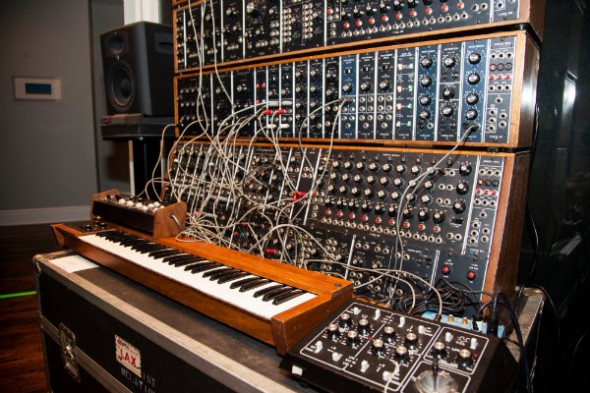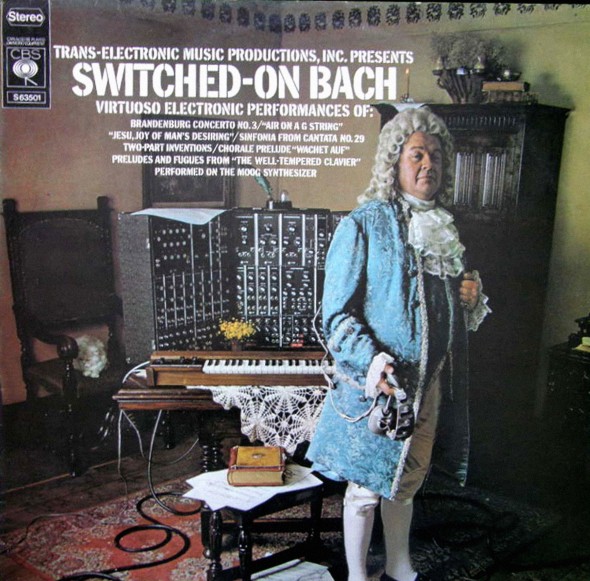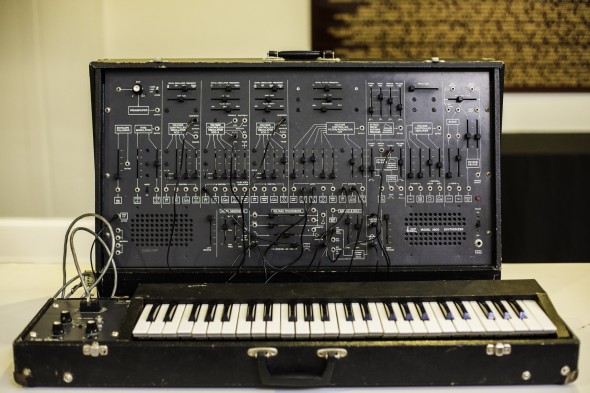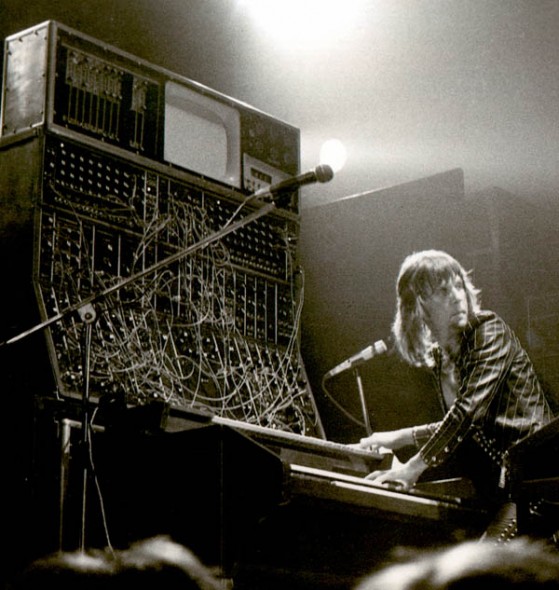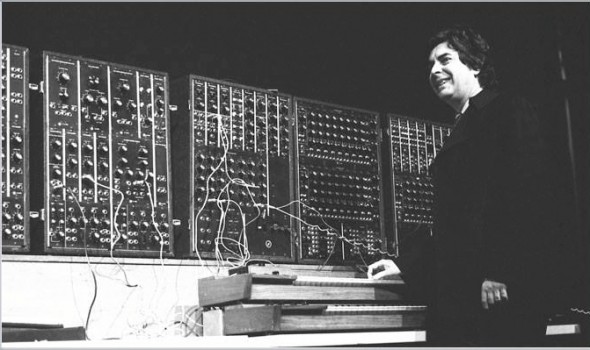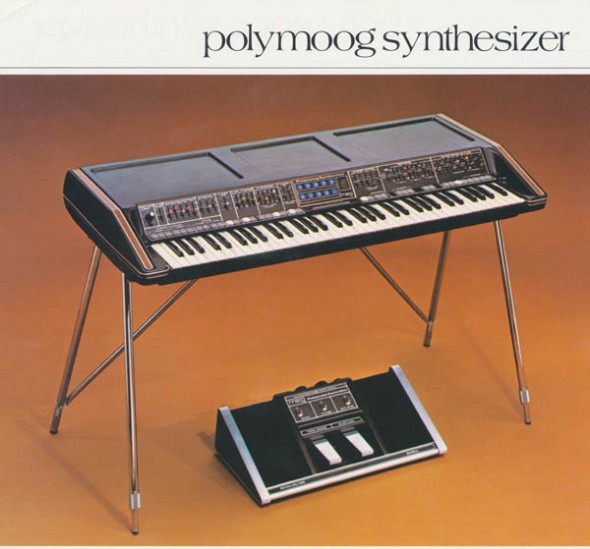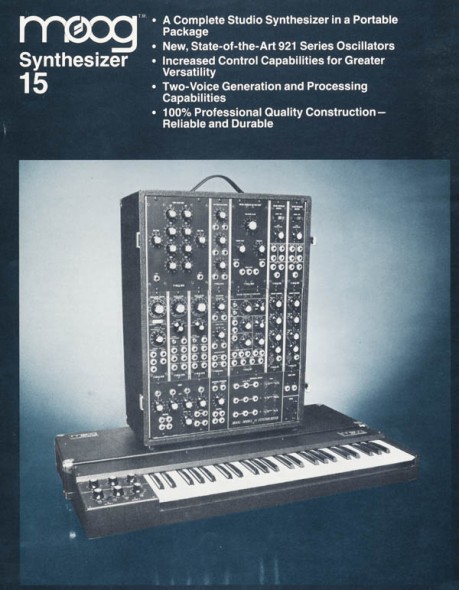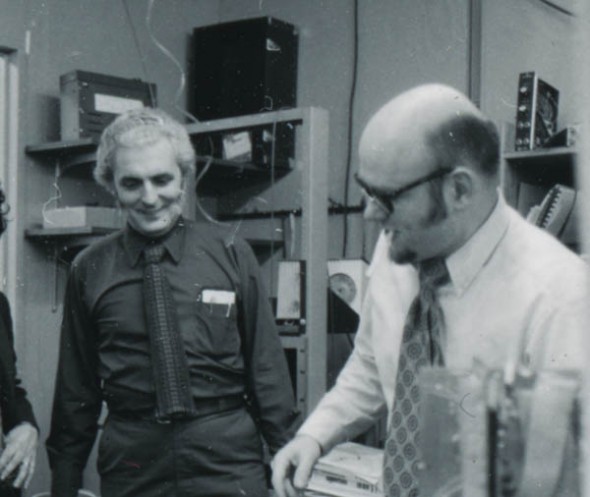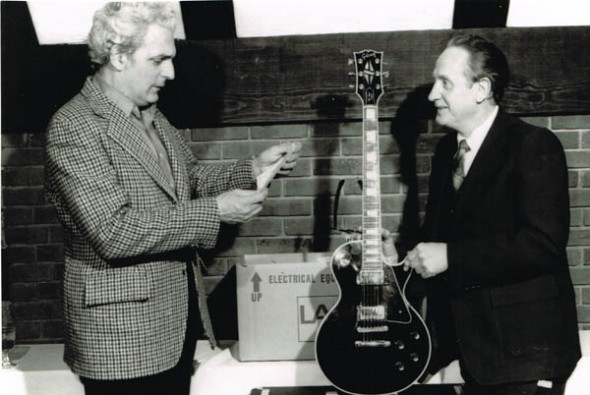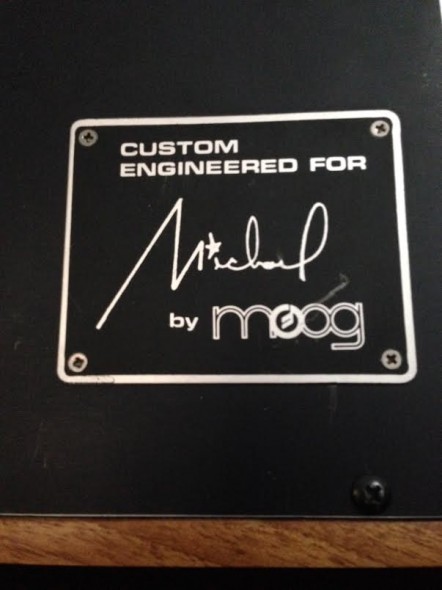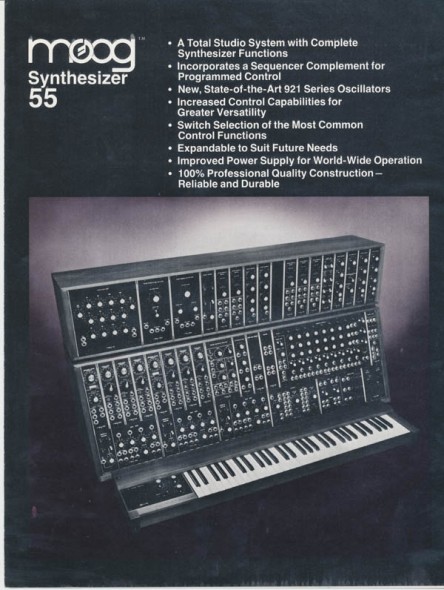It’s time for the 2015 NAMM show, and the Bob Moog Foundation is once again featuring a historically important Moog modular system. This year, it’s our honor to present the iconic Moog modular of Michael Lehmann Boddicker.
It may very well be the Moog modular that you’ve heard the most in your life, even if you’ve never heard of it.
Michael didn’t waste any time getting into music. With stats like “started playing the accordion at 2 years old,” and “working on composition and orchestration at 12,” it was pretty evident the boy was going to be a musician.
The work of Wendy Carlos (Switched-On Bach) and Dick Hyman (The Minotaur) in 1969 inspired him to pursue electronic music studies at Coe College. In 1971, he began full-time collegiate studies, while still completing high school. 1972 saw him taking contemporary songwriting at Coe, and jazz studies at the University of Wisconsin.
In 1973, Michael purchased an ARP 2600, a powerful portable modular synthesizer.
Michael’s first exposure to a Moog modular synthesizer occurred in 1973 when he was taking 20th century composition at the University of Iowa, which had a Moog system. A less collegiate exposure to the device was when he snuck backstage during an Emerson Lake and Palmer concert that year, and hid in Keith Emerson‘s dressing room. From that vantage, he studied how Emerson performed with his Moog modular.
During this time, Michael had been writing music, and some of it for paid gigs. He even wrote music for Bill Cosby‘s album. In 1974, Michael moved to Los Angeles, began auditioning and haunting music business buildings, and very nearly starved to death.
In this challenging time, Michael was mentored by none other than Paul Beaver, the man who was largely responsible for exposing the West Coast to the Moog synthesizer: Paul introduced the Moog synthesizer at the Monterey Pop Festival in 1967, and played the Moog on some of the first rock records to feature the device. Paul would loan Michael his Minimoog for gigs and for study.
Michael used the manuals for the ARP 2600 and the ARP Odyssey and translated patches for those synthesizers to the Minimoog. This process gave him a greater understanding of the Minimoog.
Michael’s musical ability and synthesis prowess led him to a variety of session and writing work that took him from near-starvation to success.
In 1975, Michael was able to purchase his own Minimoog and a Moog System 15 modular synthesizer. As a result of his purchase, a dialogue began between Michael, Bob Moog, and Dave Luce, inventor of the Polymoog. This dialogue led to Michael being asked to demonstrate the new Moog polyphonic synthesizer, the Polymoog, at the summer NAMM convention.
Summer NAMM 1975 featured Michael Boddicker demonstrating the new Polymoog. At one of these demonstrations, Bob Moog and Les Paul walked in and sat down. It wasn’t easy for Michael to perform for such esteemed guests, but he did. This convention was the beginning of a friendship between Bob and Michael Boddicker.
Michael had famed Moog engineer Rich Walborn modify his Minimoog so that it could be somewhat modular and control his System 15s. This combination of Minimoog and System 15 was often what he would carry to recording sessions. The arrangement inspired the purchase of another System 15.
In 1976, Michael bought an expanded Moog System 55 modular that was hand-delivered by Bob Moog, and even featured a personalized panel.
Bob would borrow Michael’s modular for various engagements. When Bob was in town, he would stay at Michael’s beach house, and they would often have dinner together. Some cherished memories from this time for Michael included going for walks on the beach with Bob, and even going for a swim together.
Around the time of his work with David Shire on the soundtrack for Apocalypse Now, Michael purchased the Bode/Moog Vocoder and the Formula Sound Multiple Resonance Filter Array from Bob.
Bob was responsible for some of the first efforts in taking the communication device that was the vocoder and converting it to a musical instrument. In 1968, he built a vocoder for the University of New York at Buffalo, and in 1970, he helped convert part of Wendy Carlos’ modular into one.
In 1979, Moog Music took Harald Bode‘s vocoder design and created the Moog vocoder. Michael’s personal vocoder, used on many well-known songs, will be present in the Bob Moog Foundation booth at NAMM 2015.
The Multiple Resonance Filter Array was a device made to generate resonances in various sounds, and was especially effective as a “string filter,” a device that applied the resonances of strings to synthesizer sounds, making them sound more string-like. Michael’s personal Multiple Resonance Filter Array will also appear at the Bob Moog Foundation booth at NAMM 2015.
Michael’s compositional work, his session recording work, and his synthesis work continued to become more popular. Today, his fingerprints are all over many of the most famous songs and movies from the late ’70s and ’80s (and more). His modular is one of the most historically significant electronic instruments of 1970-1980, and we are honored to share this instrument at NAMM.
Michael Boddicker is a living embodiment of the power of Bob Moog’s innovation, and his work is an enduring pillar of Bob Moog’s legacy. Through his musical gifts and skills, his mastery of the process of synthesis, and through the incredible catalog of his popular and culturally relevant work, Michael is a prime example of how Bob Moog’s legacy can inspire creativity and innovation, and drive success.
Much of his work below involved the Moog modular synthesizer on display in the Bob Moog Foundation booth at NAMM 2015. Here’s an abbreviated list of the artists he has recorded for and recordings and movies which used Michael’s modular system, Minimoog, vocoder, and/or string filter:
The Jacksons, The Jacksons
“I Heard That,” Quincy Jones
Roots (the television series)
“Lido,” Boz Scaggs
Saturday Night Fever
Close Encounters of the Third Kind
The Deep
King Kong
The Black Hole
“Lost Without Your Love,” Bread
“Short People,” Randy Newman
“Totally Hot,” Olivia Newton-John
The Wiz
Off the Wall Michael Jackson
“Surrender,” Cheap Trick
“On Top of the World,” Cheap Trick
“Shake Your Body Down to the Ground,” The Jacksons
Battlestar Galactica original television series theme
Apocalypse Now
Xanadu
Heaven Can Wait
“99,” Toto
“Let’s Groove Tonight,” Earth Wind & Fire (vocoder)
“He’s So Shy,” Pointer Sisters
“Suddenly,” Olivia Newton-John (vocoder and string filter)
“Magic,” Olivia Newton-John
“Physical,” Olivia Newton-John
“We Got the Beat,” The Go-Gos
“Gloria,” Laura Branigan
Thriller, Michael Jackson
“You Are,” Lionel Richie
“Imagination,” Laura Branigan (Michael Boddicker composer [Flashdance][Grammy])
“I Love LA,” Randy Newman
“All Night Long,” Lionel Richie
Buckaroo Banzai (Michael Boddicker Composer)
“Sunset Grill,” Don Henley
“Footloose” Kenny Loggins
Theme from “The Natural,” Randy Newman
“Dancing on the Ceiling,” Lionel Richie
“We are the World,” various artists
“Somewhere,” Barbra Streisand
Fatal Attraction’s infamous rabbit scene
Bad, Michael Jackson
The Mosquito Coast
No Way Out
Hunt for Red October, “clunking sounds”
Milo & Otis (composer)
Dangerous, Michael Jackson
And more…


